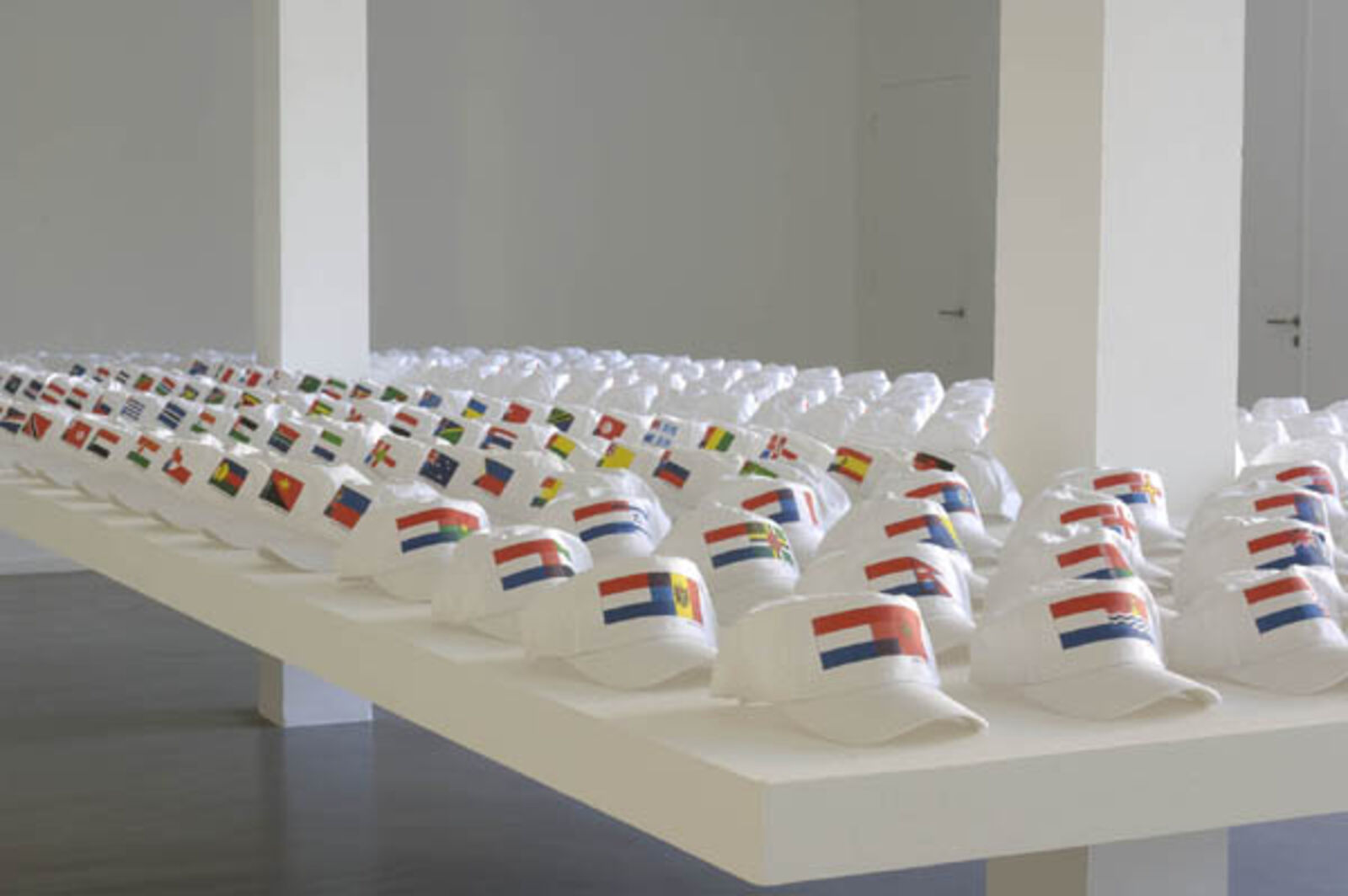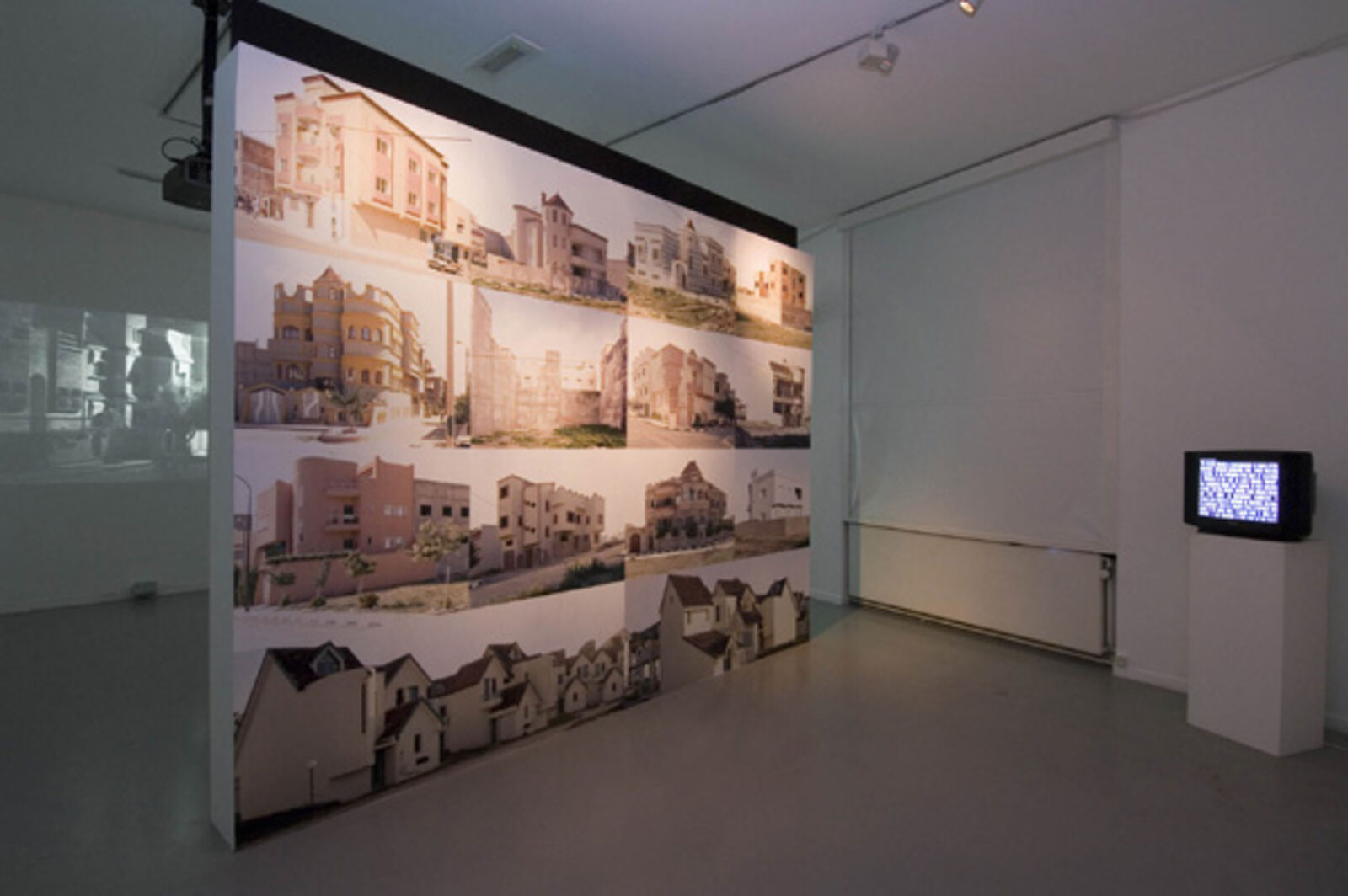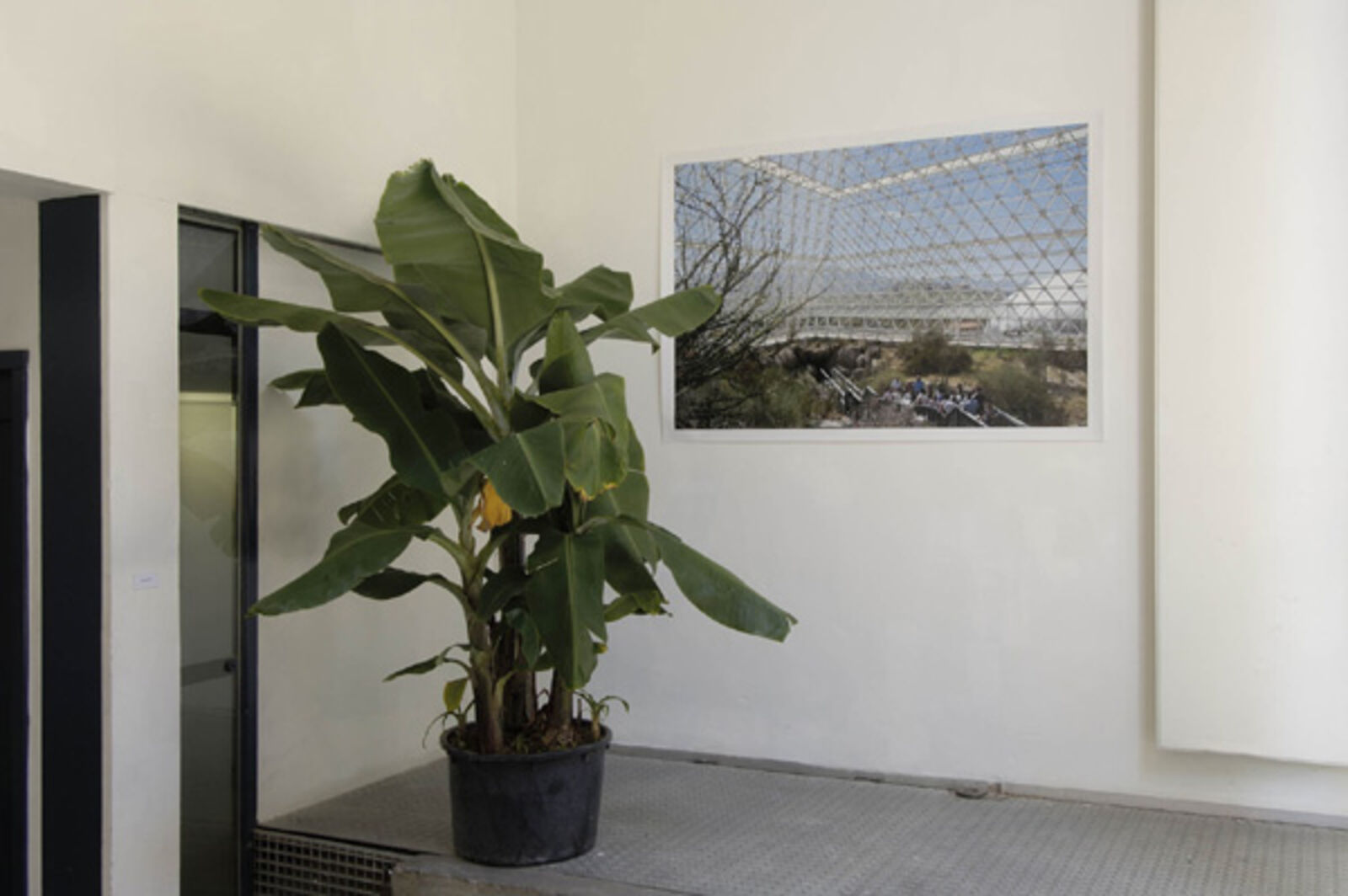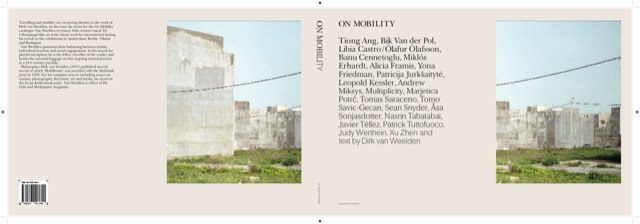On Mobility
26.08–25.09.2005
de Appel, Nieuwe Spiegelstraat 10, Amsterdam
de Appel, Nieuwe Spiegelstraat 10, Amsterdam

Alicia Framis, 234 New Dutch flags, 2005
© Peter Cox, Eindhoven
© Peter Cox, Eindhoven

Multiplicity, Solid Sea – case 04: (M)RE-tourism, 2005
© Peter Cox, Eindhoven
© Peter Cox, Eindhoven

Bik van der Pol, Biosphere 2, 2005
© Peter Cox, Eindhoven
© Peter Cox, Eindhoven

Banu Cennetoglu, Determined Barbara, 2004
© Peter Cox, Eindhoven
© Peter Cox, Eindhoven
The lives of many world citizens are affected by forced migration, while numerous others can travel freely and frequently. The harsh reality of people who do not move by their own choice is at odds with the lives and liberties of the privileged, like artists, who are invited to exhibit their work all over the world. Yet, many artists are pre-occupied with their fellow men: and in their work migration and mobility, assimilation and translation, are key issues today. Alongside cinematic and documentary approaches the essentially visual discipline of contemporary artists seems even to be a conditio sine qua non to analyse and deconstruct the complex imagery and semantics concerned. The ‘On Mobility’ project explores various views of the subject and it shows works made by artists who examine mobility in the broadest sense.
The project exists of five relay-exhibitions. The first exhibition will be in Amsterdam, in De Appel. In November BüroFriedrich in Berlin will organise a show consisting of a choice of artworks shown in Amsterdam plus four new artists added to this selection. Next, ‘On Mobility’ will travel to the Contemporary Art Centre in Vilnius (February 2006) and to
Trafó / Stúdió Galéria in Budapest (May 2006). These institutions will also add work of four new artists to a selection from the previous collection. The fifth and final exhibition will again be in De Appel (June 2006), now showing a completely different group of artists - all those who were added by the partner institutions.
In his work Tiong Ang (Surabaya, 1961) takes the shape of a travelling storyteller, a restless wanderer, collecting tales. Stories without beginning or end, without well-known heroes, without predictable lines. Everywhere he goes he is looking for unfinished, unexpected and sometimes - at first sight - insignificant events that according to him produce timeless
imagery. Ang himself temporarily goes hiding in story fragments, with the effect that his character wonders whether he is fact or fiction. Connecting threads in his work are: watching and being watched, distance and commitment, silence and communication, concentration and stupidity. In his video installation ’Cut Close Ups on Matriarchy’ Ang shows, in a delicate way, the disastrous effects of sex tourism on a unique matriarchal society in China. The first time De Appel showed Tiong Ang's work was in the group exhibition ‘The Spine’ (1994). His artwork was also exhibited, among others, in Muhka, Antwerp: ‘Collection’ (2005); 5th Shanghai Biennial, Shanghai (2004); Lumen Travo, Amsterdam: ‘Wounded’ (2004); Florence Lynch Gallery, New York: ‘Prisoners’, (2003).
Already for ten years the artists from Rotterdam Liesbeth Bik (Haarlem, 1959) and Jos van der Pol (Arnhem, 1961) have been working together. Their engagement with the surrounding area results in (often architectonically inspired) installations with a program questioning the history and future of the locations. Their projects are oriented towards issues of functionality and utility of art in a given situation or place. Like intermediaries they are determined to change the cultural climate and to modify it in a constructive way. For ‘On Mobility’ Bik Van der Pol chose the subject of a contaminated area, which is a tourist attraction: veterans, schoolchildren and others visit a former test area for nuclear bombs. In another work ‘Biosphere’ people can live in a glass house, which is designed to be a complete mini-world. This glass house was originally built in the eighties but in the end it appeared to be an uninhabitable place. The international attention for the projects of Bik Van der Pol is increasing and in 2005 their work will be on view among others in BüroFriedrich, Berlin, Museum het Valkhof, Nijmegen and Wiener Secession, Vienna. They are also the key figures of the New York initiative ‘Nomads in Residents’. Documentation: www.bikvanderpol.net
The work of the Rotterdam-based artists couple Castro/Ólafsson (Libia Pérez de Siles de Castro (Málaga, 1970) and Ólafur Árni Ólafsson (Reykjavík, 1973)) is always on the move. The duo brings earlier project themes to a subsequent place, where the artists use the local context. The installation ‘Noise of Money’ presents the life stories of immigrants who came to Iceland to work in a fish factory. This playful but critical work is a remix of images and stories from Castro/Ólafsson's continuing research of the influence and consequences of social and political decision-making on every day life. In 2004 De Appel presented their project ‘Wir wünschen Ihnen einen angenehmen Aufenthalt’. Documentation: www.libiaolafur.
Banu Cennetoglu (Ankara, 1970) studied in Istanbul, New York and in 2002/2003 at the Rijksakademie in Amsterdam. The subject of the work she shows in De Appel, ‘Determined Barbara’, is the forced relocation of people in Banja Luca, who are not allowed to use their own land because it's invaded by the SFOR peace corps. In 2004 Cennetoglu took part in the exhibition ‘Sisters and brothers and birds’ in the Badischer Kunstverein in Karlsruhe. The same year her work was shown at the 3rd Berlin Biennial.
The performances and installations of the Spanish artist Alicia Framis (Barcelona, 1967) have much ground in common with fashion, architecture and design. Human existence and relations are central themes in Framis’ artwork. Activities in public places and museological presentations are often part of a larger, socially oriented project. In the work she made for the purpose of ‘On Mobility’ she shows the shift in the feeling of nationality experienced by migrants. Her projects have been in exhibitions among others in Palais de Tokyo in Paris (Anti Dog), on the 2nd Berlin Biennial (Minibar), the Migros Museum Zurich (Remix Buildings) and Stedelijk Bureau Amsterdam (Dreamkeeper). In 2003 she was selected for the Dutch contribution to the Biennial of Venice. In 2000 she took part in the group exhibition ‘Plan B’ organised by the Appel's Curatorial Training Programme.
Multiplicity is an ever-changing group of architects, artists and theorists interested in the urban environment. The group was founded by the architect Stefano Boeri (Milan, 1956). ‘On Mobility’ shows a research work that is part of the Solid Sea project: Solid Sea, case 04, ‘(M)RE-tourism’. In this work Multiplicity examines the migration of workers from the Mediterranean to northwest Europe; the migrants' home country is often severely affected by this phenomenon. Multiplicity examines territorial tensions and related economical and social aspects. The network tries to find new ways to investigate the relationship between the physical environment and the society that owns these places. In 2003 Multiplicity presented Border-Device(s), a study of border mechanisms, on the Biennial of Venice. This year Solid Sea, case 04, '(M)REtourism’was shown as a documentary on de Architecture Biennial of Rotterdam. Documentation: www.multiplicity.it
The work of Slovenian artist Marjetica Potrc (Ljubljana, 1953) attempts to propose specific solutions to improve the relation between individual and society. Her projects have strong social and ecological dimensions. Her contribution to ‘On Mobility’, ‘Hippo Water Roller’, is a ready made, meant to ease the hard work of poor people in South-Africa who have to
carry water over long distances. Potrc is well known for her ‘case studies’ of improvised buildings in shanty towns. In analytical drawings and self-built constructions Potrc shows that the solutions of local people sometimes work out much better than the plans produced on the drawing boards of urban planners. In her solo exhibition ‘Urban Growings’ in De Appel (2004) she showed different versions of inventive self-made constructions. Information: www.potrc.org
Nasrin Tabatabai (Tehran, 1961) works on universal themes of life in the city. She shows similarities in the local issues of different cities by comparing them. In the video's selected for ‘On Mobility’ Tabatabai indicates how the city environment influences the life of inhabitants in Rotterdam and Tehran. In 2000 Nasrin Tabatabai participated in the exhibition UNLIMITED.NL#3, which was composed for De Appel. She has shown her work among others in Witte de With, Rotterdam, Kröller Müller Museum, Otterlo and Fridericianum, Kassel.
